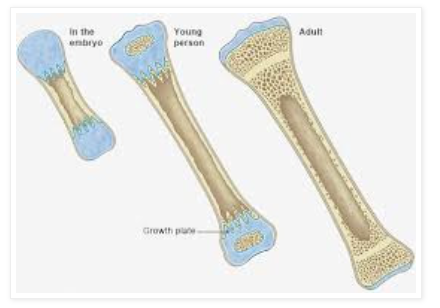Ossification Test and Its Legal Implications (GS Paper 2, Governance)

Context
- The ossification test has gained significant attention in the legal arena, particularly following its use in a recent high-profile murder case involving a political figure.
- In such cases, determining whether an accused individual is a minor is crucial, as it dramatically affects legal procedures, rehabilitation options, and sentencing.
What is the Ossification Test?
- Ossification refers to the biological process by which cartilage transforms into bone. This process begins during fetal development and continues into late adolescence.
- The ossification test estimates a person's age based on their skeletal maturity, particularly through X-rays of the bones in the hands and wrists.
Key Features of the Ossification Test:
- X-ray Analysis: The test involves taking X-ray images of specific bones, which are then assessed for their development stage. The skeletal maturity observed in these images is compared against established growth standards.
- Scoring System: A systematic approach may be employed where each bone is evaluated based on its growth compared to maturation benchmarks specific to a given population. This scoring aids in estimating the age range of the individual.
Reliability of the Test
The accuracy of ossification tests can be affected by several factors:
- Individual Variability: There are natural differences in bone maturation rates among individuals. Factors such as genetics, nutrition, and overall health can lead to variations that may complicate age estimation.
- Age Range Estimation: The test typically provides an age range rather than a precise age. For example, a test might indicate an individual is between 17 and 19 years old. This range can lead to debates in courts about whether to consider the lower or upper limit of this estimation.
- Judicial Precedents: Courts have had to grapple with the implications of these age ranges. For instance, in a ruling by the Delhi High Court, it was stated that in cases under the Protection of Children from Sexual Offences (POCSO) Act, the upper age limit of the ossification test's reference range should be considered. Additionally, a margin of error of two years was acknowledged in determining age.
Legal Framework and Judicial Perspective
The legal framework surrounding age determination is guided by the Juvenile Justice Act, 2015. According to this Act:
- Initiation of Age Determination: If there are "reasonable grounds for doubt" regarding a person's age, the relevant Board is required to initiate the age determination process. This process emphasizes the need for accuracy, as age significantly influences legal outcomes.
- Primary Evidence for Age Verification: The Act prioritizes specific documents as primary evidence:
- A school-issued birth certificate or a matriculation certificate from an examination board is the first choice.
- If these are unavailable, a birth certificate from municipal authorities, corporations, or panchayats can be considered.
- Role of Ossification Tests: Ossification tests are only to be conducted when other documentary evidence is lacking. This emphasizes the importance of maintaining a hierarchy of evidence, with physical tests as a last resort. The Supreme Court has reiterated this stance, stating that ossification tests should not override existing documentary evidence.
Importance of Age Determination in Criminal Justice
Understanding a person's age is critical within the criminal justice system, as it delineates the approach to legal procedures, rehabilitation options, and potential sentencing.
- Distinction between Minors and Adults: In India, individuals below the age of 18 are classified as minors. The Juvenile Justice (Care and Protection of Children) Act, 2015 governs their treatment within the justice system. Minors are not sent to adult prisons but are instead placed in observation homes, where their rehabilitation and welfare can be prioritized.
- Juvenile Justice Board (JJB): Minors are tried in front of a Juvenile Justice Board, consisting of a magistrate and social workers with expertise in child welfare. The JJB can decide on corrective measures such as admonition, community service, or placement in a special home for a maximum of three years.
- 2021 Amendment: The Juvenile Justice Amendment Act introduced provisions for conducting preliminary assessments for minors over the age of 16 who are apprehended for serious crimes (punishable by at least seven years in prison). This assessment examines:
- The minor’s mental and physical capacity to commit the offense.
- Their understanding of the consequences of their actions.
- The circumstances surrounding the offense to determine whether they should be tried as adults.
Conclusion
- The ossification test serves as a vital tool for age determination, particularly in criminal cases involving minors.
- While it is an important aspect of the judicial process, legal authorities emphasize the need for caution and the prioritization of documentary evidence.
- The relationship between age determination and the criminal justice system underscores the necessity for careful deliberation to ensure that justice is appropriately administered for individuals of all ages.
- As legal frameworks continue to evolve, it is essential for the justice system to balance the scientific methods of age estimation with the rights and protections afforded to minors, ensuring that rehabilitation and corrective measures remain at the forefront of juvenile justice.
- This holistic approach not only aids in the fair administration of justice but also promotes the welfare of young individuals within the legal system.


